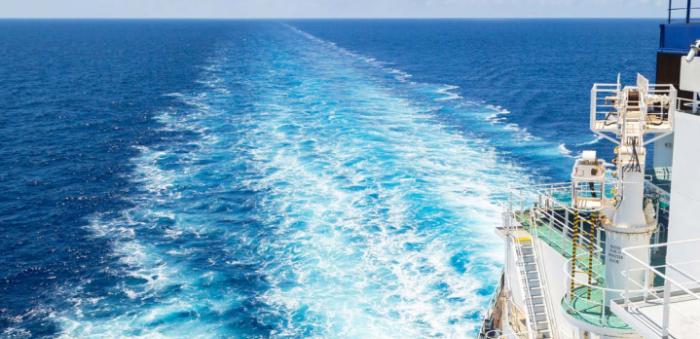The International Transport Forum released a report outlining measures to achieve zero CO2 emissions from international maritime transport by 2035. It presents measures that can reduce shipping emissions and describes possible decarbonisation pathways that use different combinations of these measures.
The report says that carbon emissions from global shipping are expected to reach approximately 1,090 million tonnes by 2035. This would be a 23% increase of emissions by 2035 compared to 2015.
The baseline scenario incorporates the impact of existing international regulations, including on the energy efficiency of ships. A geographical representation of shipping emissions and their evolution shows that a large share of carbon emissions in the baseline scenario is generated along main East-West trade lanes.
Moreover, many measures are needed to achieve decarbonisation of maritime transport. Even though shipping GHG emissions might fall by 2035 because of less transport of fossil fuels and more regionalisation of trade, this will be a moderate decrease. To achieve full decarbonisation of shipping by 2035 significant operational and technical improvements are important.
[smlsubform prepend=”GET THE SAFETY4SEA IN YOUR INBOX!” showname=false emailtxt=”” emailholder=”Enter your email address” showsubmit=true submittxt=”Submit” jsthanks=false thankyou=”Thank you for subscribing to our mailing list”]
The report emphasizes three types of measures to reduce shipping emissions:
Technological measures: Improving energy efficiency with technological measures is the aim of the global regulation on the energy efficiency of ships. This regulation requires ships built after 1 January 2013 to comply with a minimum energy efficiency level: the Energy Efficiency Design Index (EEDI). EEDI measures the CO2 emitted based on ship design and engine performance data. The EEDI level is tightened gradually every five years with an initial CO2 reduction level of 10% for the first phase (2015-2020), 20% for the second phase (2020-2025) and a 30% reduction from 2025 to 2030.
Operational measures: Operational measures relate to the way in which maritime transport systems are being operated. There are four different measures: speed, ship size, ship-port interface and onshore power. Slower speeds and larger ships have decreased shipping emissions. The ship-port interface relates to reduction of ship waiting time before entering a port. Onshore power facilities reduce the emissions of ships while it its in the port.
Alternative fuels and energy measures: Alternative fuels and energy have lower or zero ship emissions when used for ship propulsion. ITF notes that there are certain alternative fuels or alternative energy that can play an important role in the future. These are:
- Advanced biofuels;
- LNG;
- Hydrogen;
- Ammonia;
- Methanol;
- Wind power;
- Fuel cells;
- Electric/hybrid propulsion;
- Solar energy;
- Nuclear propulsion;
See more about the report, in the PDF herebelow































































